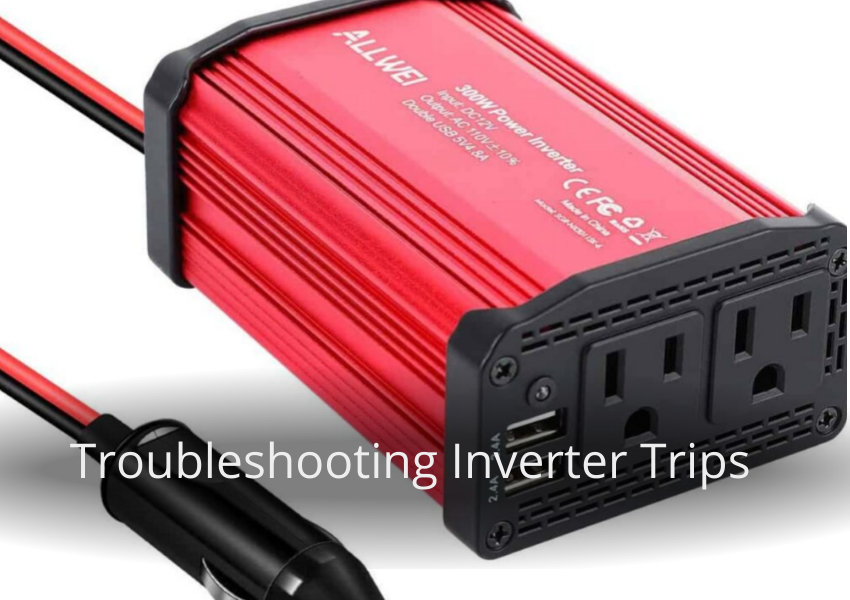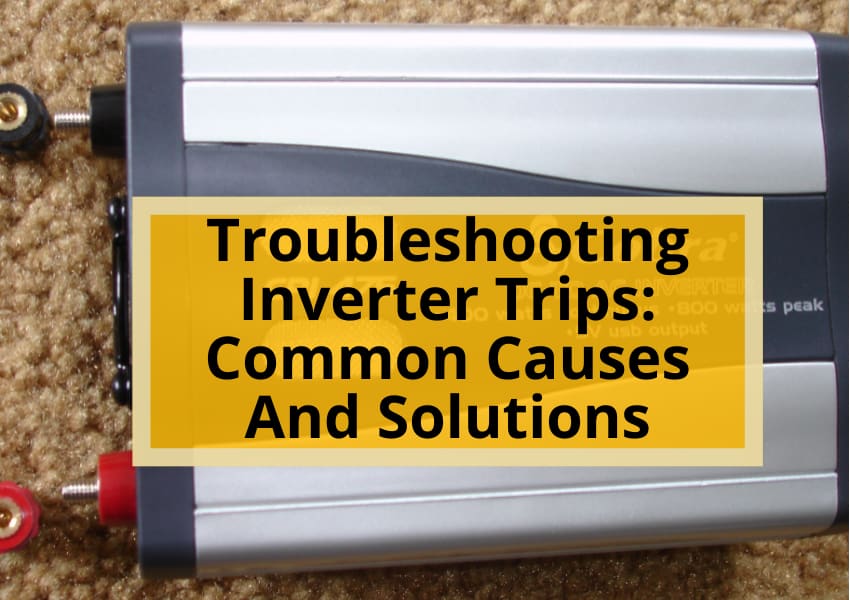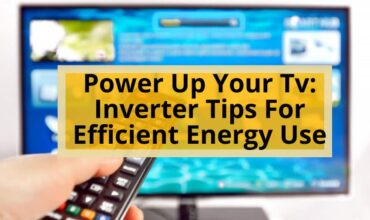In the world of solar power systems, inverters play a crucial role in converting DC power into AC power. However, their occasional trips and subsequent malfunctioning can cause inconvenience and potential harm to the entire system.
Like any other electrical device, inverters are susceptible to various issues that may lead to trips. These issues include overloaded circuits, short circuits, ground fault surges, and voltage fluctuations, among others. Additionally, improper installation, poor maintenance, loose connections, and tripped circuit breakers can contribute to inverter trips.
To ensure the longevity and efficient operation of inverters, it is essential to identify the root cause of the trip and implement appropriate solutions. This article will explore the common causes of inverter trips and provide practical solutions to troubleshoot and prevent future occurrences.
By addressing these issues, individuals can optimize their solar power systems and enjoy uninterrupted access to clean energy.
Common Causes
One of the important aspects of troubleshooting inverter trips is understanding the common causes that can lead to the tripping of inverters.
Common causes include:
- Overloading: Occurs when the inverter is asked to supply more power than it can handle, leading to excessive heat build-up and tripping.
- Voltage fluctuations: Such as sudden spikes or drops in voltage, can also cause the inverter to trip as it is designed to protect itself from damage.
- Improper installation: Such as loose connections or incorrect wiring, can create issues with the inverter’s performance and lead to tripping.
- Poor maintenance: Such as neglecting to clean or inspect the inverter regularly, can contribute to its malfunction and subsequent tripping.
Understanding these common causes is essential in effectively troubleshooting inverter trips and preventing future occurrences.

Proper Installation
Proper installation practices play a pivotal role in ensuring the reliable operation of an inverter system. When it comes to installing an inverter, attention to detail is crucial.
Firstly, it is important to select an appropriate location for the inverter, considering factors such as ventilation, accessibility, and protection from environmental elements. The inverter should be installed in a clean and dry area, away from direct sunlight or extreme temperatures.
Additionally, the inverter should be securely mounted to prevent vibrations or movement that could potentially damage the system. Proper wiring is also essential, with careful consideration of wire size, length, and connections.
Following manufacturer guidelines and consulting with a qualified electrician during the installation process can help ensure that all necessary safety measures and regulations are met. Ultimately, a properly installed inverter system minimizes the risk of tripping and promotes its efficient and uninterrupted performance.
also read : The Perfect Inverter Size For Your Tv: Powering Entertainment With Solar Energy
Voltage Fluctuations
Voltage fluctuations can disrupt the smooth operation of an inverter system, potentially leading to performance issues or even tripping. Inverters are designed to convert DC into AC power, and they require a stable input voltage to function properly. Fluctuations in voltage can occur due to various reasons, such as grid instability, electrical load variations, or faulty wiring.
These fluctuations can cause the inverter to operate outside its specified voltage range, resulting in malfunctions or shutdowns. To address this issue, it is crucial to ensure that the inverter is connected to a stable power source with minimal voltage fluctuations. Additionally, installing voltage stabilizers or surge protectors can help mitigate the impact of voltage fluctuations on the inverter system.
Regular maintenance and monitoring of the voltage levels can also help identify and address any potential issues before they lead to inverter trips.
Overloading
To prevent potential issues and ensure the smooth operation of an inverter system, it is essential to carefully manage the electrical load to avoid overloading.
Overloading occurs when the connected load exceeds the maximum capacity of the inverter. This can lead to overheating, tripping of the circuit breakers, and even damage to the inverter itself.
It is crucial to calculate the power requirements of the appliances and devices that will be connected to the inverter and ensure that the total power does not exceed the inverter’s capacity. In case of a high power demand, it is advisable to use multiple inverters or opt for a higher capacity inverter.
Regular monitoring of the load and periodic maintenance of the inverter can help identify and address overloading issues promptly, ensuring the longevity and efficient functioning of the system.
Maintenance
Regular maintenance of the inverter system is essential to ensure its optimal performance and prevent potential issues, such as overheating and circuit breaker tripping, which can arise from neglecting maintenance requirements.
By conducting routine maintenance, the components of the inverter system can be inspected and cleaned, ensuring that they are free from dust, debris, and any other potential obstructions that could hinder their functionality.
Additionally, regular maintenance allows for the detection and timely repair of any loose connections, worn-out parts, or damaged components, thus minimizing the risk of electrical faults or malfunctions.
Furthermore, maintenance activities also involve checking the battery voltage and ensuring its proper functioning, as a weak or discharged battery can lead to inverter tripping.
Overall, adhering to a regular maintenance schedule for the inverter system promotes its longevity and reliability, ensuring uninterrupted power supply and minimizing the occurrence of unexpected trips.
Frequently Asked Questions
How long does an average inverter trip last?
The duration of an average inverter trip can vary depending on the specific cause of the trip. It can range from a few seconds to several minutes or longer, until the underlying issue is resolved.
Can an inverter trip be caused by external factors such as lightning strikes?
Yes, an inverter trip can be caused by external factors such as lightning strikes. Lightning can create power surges or electrical disturbances that can overload or damage the inverter, leading to a trip.
What are the signs that indicate a potential inverter trip?
Signs of a potential inverter trip include sudden loss of power, flickering lights, unusual noises, error codes or warning lights on the inverter, and excessive heat or burning smells. These indicators require further investigation to identify the underlying cause.
How can I prevent inverter trips during power fluctuations?
To prevent inverter trips during power fluctuations, it is important to ensure proper installation, regular maintenance, and monitoring of voltage levels. Additionally, using surge protectors, stabilizers, and voltage regulators can help stabilize power supply and protect the inverter from damage.
Is it possible to reset an inverter after it has tripped?
Yes, it is possible to reset an inverter after it has tripped. By turning off the inverter, waiting for a few minutes, and then turning it back on again, the inverter can be reset and resume normal operation.






